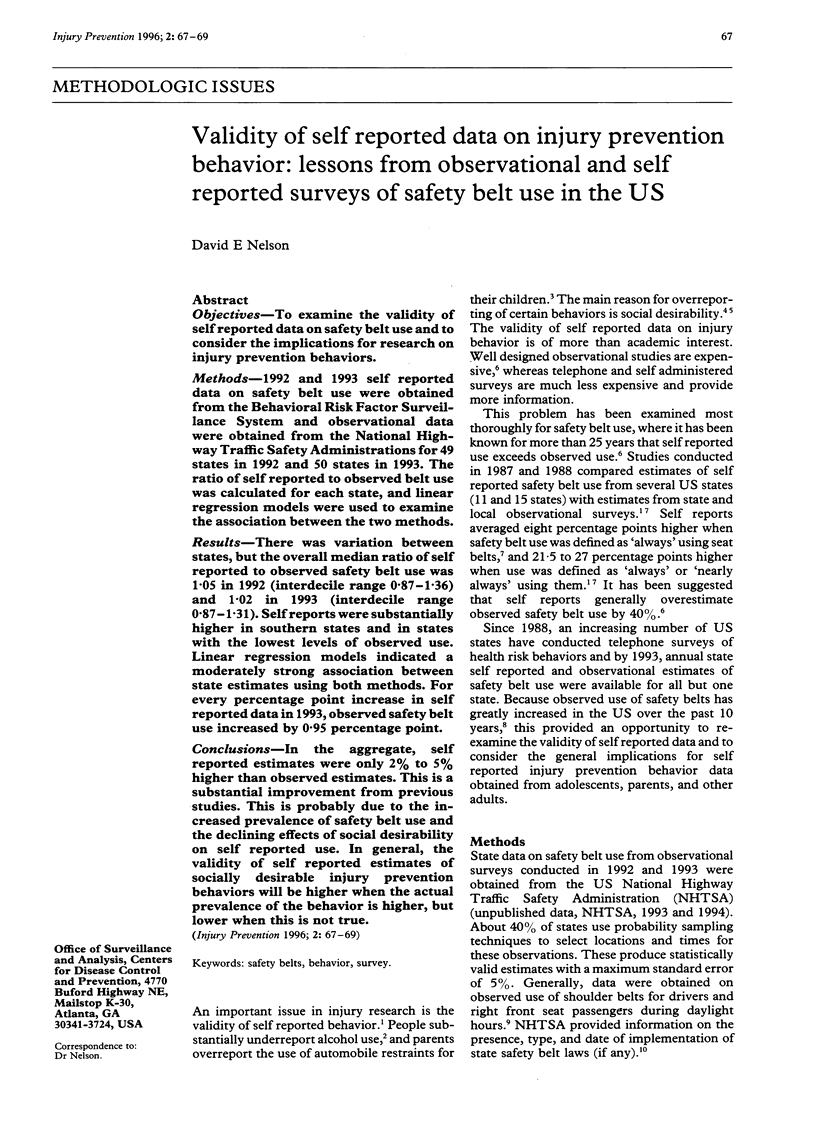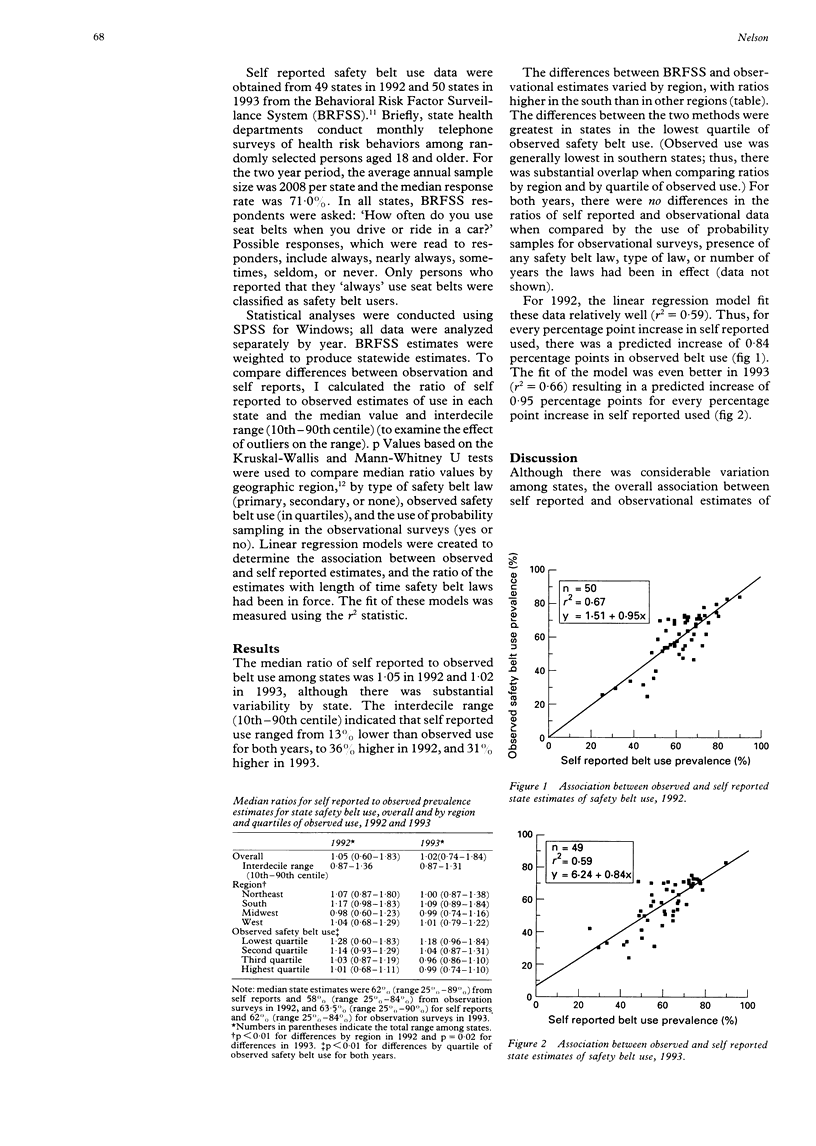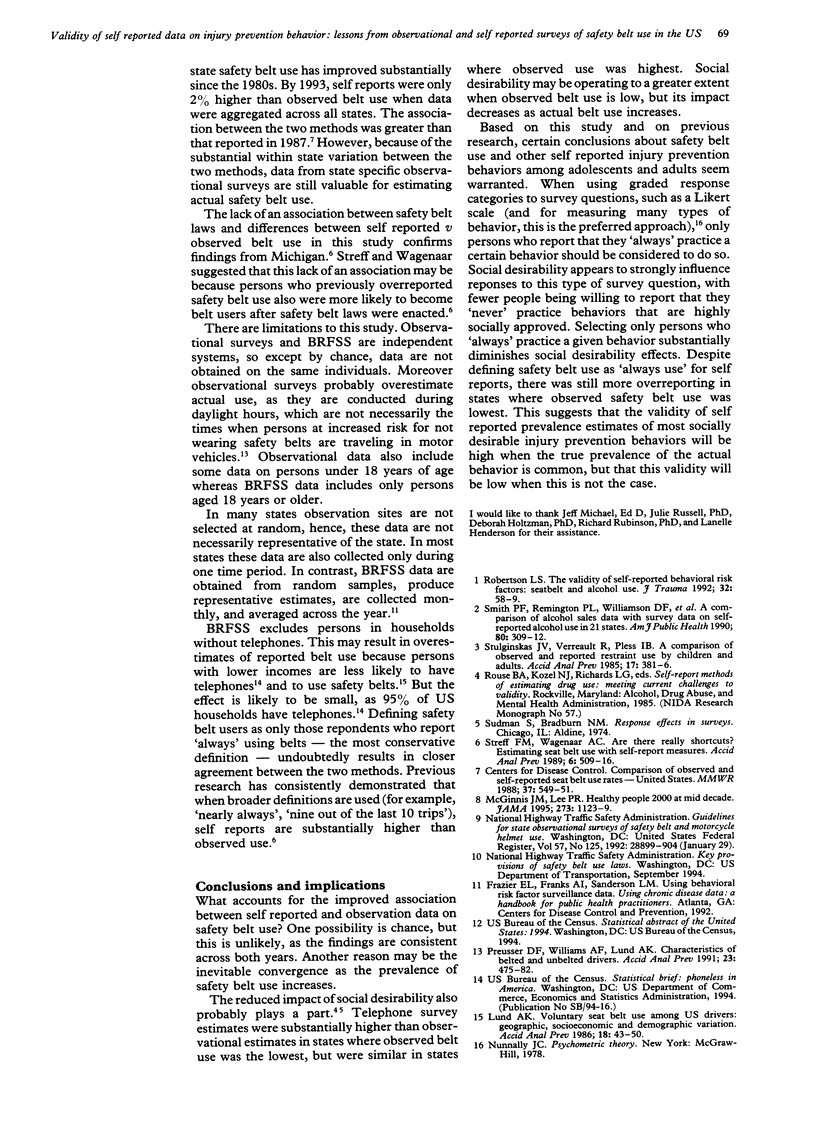Abstract
OBJECTIVES: To examine the validity of self reported data on safety belt use and to consider the implications for research on injury prevention behaviors. METHODS: 1992 and 1993 self reported data on safety belt use were obtained from the Behavioral Risk Factor Surveillance System and observational data were obtained from the National Highway Traffic Safety Administrations for 49 states in 1992 and 50 states in 1993. The ratio of self reported to observed belt use was calculated for each state, and linear regression models were used to examine the association between the two methods. RESULTS: There was variation between states, but the overall median ratio of self reported to observed safety belt use was 1.05 in 1992 (interdecile range 0.87-1.36) and 1.02 in 1993 (interdecile range 0.87-1.31). Self reports were substantially higher in southern states and in states with the lowest levels of observed use. Linear regression models indicated a moderately strong association between state estimates using both methods. For every percentage point increase in self reported data in 1993, observed safety belt use increased by 0.95 percentage point. CONCLUSIONS: In the aggregate, self reported estimates were only 2% to 5% higher than observed estimates. This is a substantial improvement from previous studies. This is probably due to the increased prevalence of safety belt use and the declining effects of social desirability on self reported use. In general, the validity of self reported estimates of socially desirable injury prevention behaviors will be higher when the actual prevalence of the behavior is higher, but lower when this is not true.
Full text
PDF


Selected References
These references are in PubMed. This may not be the complete list of references from this article.
- Lund A. K. Voluntary seat belt use among U.S. drivers: geographic, socioeconomic and demographic variation. Accid Anal Prev. 1986 Feb;18(1):43–50. doi: 10.1016/0001-4575(86)90035-7. [DOI] [PubMed] [Google Scholar]
- McGinnis J. M., Lee P. R. Healthy People 2000 at mid decade. JAMA. 1995 Apr 12;273(14):1123–1129. [PubMed] [Google Scholar]
- Preusser D. F., Williams A. F., Lund A. K. Characteristics of belted and unbelted drivers. Accid Anal Prev. 1991 Dec;23(6):475–482. doi: 10.1016/0001-4575(91)90013-u. [DOI] [PubMed] [Google Scholar]
- Robertson L. S. The validity of self-reported behavioral risk factors: seatbelt and alcohol use. J Trauma. 1992 Jan;32(1):58–59. doi: 10.1097/00005373-199201000-00012. [DOI] [PubMed] [Google Scholar]
- Smith P. F., Remington P. L., Williamson D. F., Anda R. F. A comparison of alcohol sales data with survey data on self-reported alcohol use in 21 states. Am J Public Health. 1990 Mar;80(3):309–312. doi: 10.2105/ajph.80.3.309. [DOI] [PMC free article] [PubMed] [Google Scholar]
- Streff F. M., Wagenaar A. C. Are there really shortcuts? Estimating seat belt use with self-report measures. Accid Anal Prev. 1989 Dec;21(6):509–516. doi: 10.1016/0001-4575(89)90066-3. [DOI] [PubMed] [Google Scholar]
- Stulginskas J. V., Verreault R., Pless I. B. A comparison of observed and reported restraint use by children and adults. Accid Anal Prev. 1985 Oct;17(5):381–386. doi: 10.1016/0001-4575(85)90092-2. [DOI] [PubMed] [Google Scholar]


